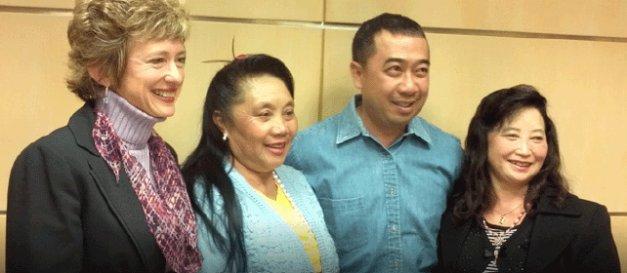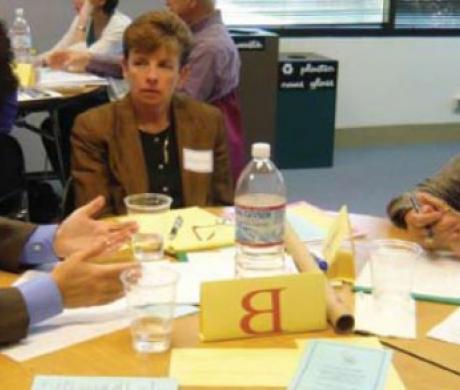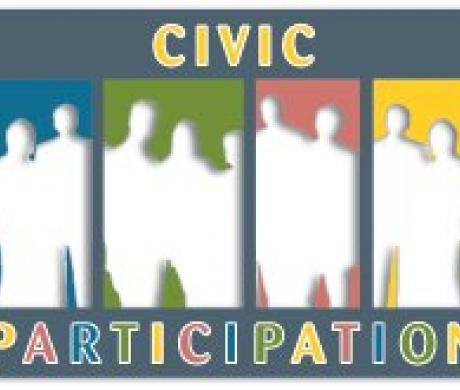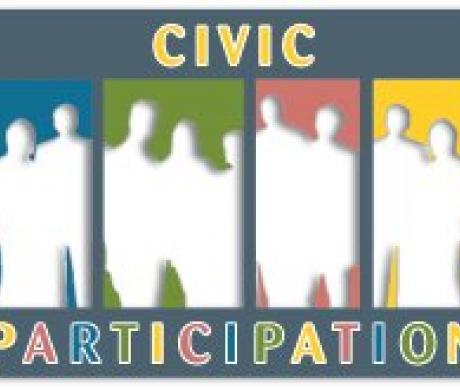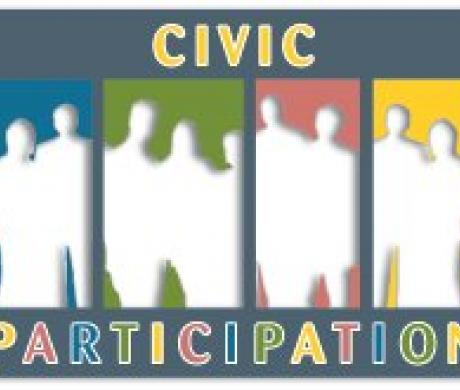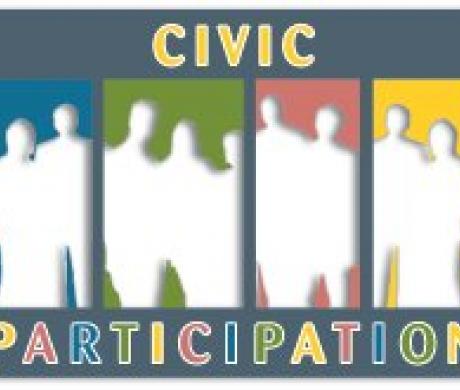Fresno’s Planning Process Builds Trust
Jennifer Armer is a program coordinator for the Institute for Local Government (ILG) and can be reached at jarmer@ca-ilg.org. Steve Sanders is co-director of ILG’s Sustainable Communities program and can be reached at ssanders@ca-ilg.org. Initial research for this article was provided by the Metropolitan Group (www.metgroup.com).
California has experienced enormous demographic changes throughout its history. Since the Gold Rush successive waves of immigrants have arrived from around the globe. Many such groups settled in certain regions and created communities; for example, there is a thriving Russian community in West Sacramento, a Vietnamese community in San Jose, and Hmong and Laotian communities in the San Joaquin Valley. Earlier immigrants established the Armenian and Basque settlements in the southern Central Valley, Japanese and Chinese neighborhoods in the San Francisco Bay Area, and Mexican and Central American communities throughout Southern and Central California.
Fully engaging and integrating these diverse groups, particularly relatively recent arrivals, into the civic life of the community presents a major challenge for local leaders statewide. One tool to help meet this challenge is the municipal planning process.
Communities use planning to establish a common vision and make choices about the future. But the process of developing a plan — educating residents about choices and options, seeking consensus and providing the opportunity to learn how to participate effectively in local government and make unique contributions — can be as important as the final plan itself. Planning activities can build relationships and trust that in turn provide a foundation for future efforts around local issues and concerns. Fresno’s recent experience in updating its General Plan offers a case in point.
Community Partners Play Vital Role in Outreach
The City of Fresno (pop. 501,362), located in California’s Central Valley, had areas of significant poverty, especially in and around the downtown core, and a pattern of low-density development on its outskirts. Fresno’s leaders recognized the critical need for a new strategy to guide future development. The General Plan update process in 2011 offered an opportunity to engage the public in developing such a strategy and to restore a sense of community and pride.
The city’s elected officials and executive staff acknowledged that planning is integral to community, fiscal and economic vitality. With this in mind, they encouraged staff to engage in a broad outreach effort to launch the planning process.
Fresno, like many California cities, is very ethnically and economically diverse. The city first looked to its community partners, such as the Fresno Interdenominational Refugee Ministries and the West Fresno Family Resource Center, for help in reaching out and engaging residents who had limited prior experience with the city government and its planning process.
Many of these organizational partners knew one another well and were accustomed to collaborating. A number of them were skilled in community outreach, and their efforts ultimately generated support from the California Endowment’s Building Healthy Communities grant program.
These long-term partnerships helped to overcome immigrant residents’ resistance and mistrust based on their experiences with government in their countries of origin. Both the city and the community partners recognized the importance of building trust and the central role in the potential success of the planning process.
“Most of these folks had never heard of city planning,” says Reverend Sharon Stanley, director of refugee and immigration ministries for the United Christian Church, one of the city’s community partners. “They had certainly never heard of a General Plan, and many of them — particularly those from a refugee background — had histories of oppression in their own homelands where there had been real consequences for that type of engagement. For instance, Laotians had experiences in Laos where if they spoke against the government, it was at the risk of losing their own lives! They had understandably developed very guarded practices, so asking them to say what they want their city to look like was terrifying to most of them. They wondered, how can I say what I really want for my family, my street and my neighborhood without dangerous consequences?”
The city and its partners set the stage by framing the conversation in terms of community values rather than city policies. In developing the outreach program, they asked, “How do we help people feel that ‘this process matters to me, my family and my neighborhood’?”
Fresno invited conversation through its partner organizations to create a truly collaborative process with the community’s diverse residents.
A Friendly, Accessible Approach
To launch the process, the partner organizations employed the universal languages of food, art and music. Live music and big pots of soup helped give the introductory meeting an approachable feel, which was especially important for those residents who were leery of government.
The partner organizations helped craft the participation processes using a model that emphasizes one-to-one conversations to build relationships and identify issues. Creating a festive spirit supported the relationship-building efforts and introduced city planning in a way that was relevant to many cultures.
Initial community meetings brought hundreds of people into the planning process to share their neighborhood priorities firsthand and help shape the new General Plan.
Cultural art and food played a key role throughout the process. Potlucks served as an important tool as the meetings gradually shifted from neighborhood venues to city hall. Participants shared meals before the meetings began, making the planning process feel more inclusive and incorporating the familiarity of breaking bread with friends and family.
Likewise, displays of cultural art provided opportunities for community members to express themselves in a way that was comfortable and inviting. Members of the Hmong community created a citizenship quilt that depicts what they value in the neighborhood as well as the changes they want to see.
Time Frame
The city reached out to thousands of residents, business owners and property owners as the process unfolded. Initial public outreach started in summer 2011. Community discussions and review began in fall 2011 and continued through 2012 and into early 2013. The process will culminate with public hearings on the full Draft General Plan in spring 2013.
Process Builds Confidence in Local Government
The success of the General Plan update process can be measured in a number of ways; one is the new higher level of resident engagement. The previous General Plan was prepared in 2001–02. Fresno Planning Department Assistant Director Keith Bergthold, who attended public meetings for the previous update, explains that the public notices were typically no more than the required legal notice in the newspaper. Turnout was extremely low at the 20-plus meetings held. “At many meetings,” he says, “I was only the fourth or fifth person there from the community.”
But at the public hearing held in April 2012 to consider the five alternatives for this General Plan, Bergthold estimates that 350 people attended, 87 of whom spoke knowledgably on the issues based on their interests and goals. This produced a strong community consensus. In a feature article for Groundswell (groundswellsjv.org), a community network focused on land-use issues, blogger Dan O’Connell wrote about the impressive number of community members who attended:
“The breadth of people presenting was stunning — Latino children, Hmong grandmothers, neighborhood activists, mothers with sleeping children on their shoulders, pastors, doctors, public health professionals, air quality advocates, conservation groups, business council reps, League of Women Voters, and on and on. Some comments were given in Spanish and Southeast Asian languages through interpreters.”
By partnering with trusted community organizations, the City of Fresno was able to connect with residents in a collaborative way that helped them feel respected and safe.
As one planning meeting concluded, a group of participants gathered for a photo in front of city hall. An elderly Hmong woman said, “This is my city hall.” The entire group began chanting, “My city hall, my city hall!” This expression of confidence in local government reflects the success of the extensive public engagement efforts.
The Bigger Picture
Fresno’s planning process occurred in the context of the economic downturn and foreclosure crisis, ongoing regional planning for sustainability, and the loss of redevelopment tools to foster local housing and downtown development. Previous assumptions about what works economically and fiscally, what residents need and what trends are shaping the future needed to be re-examined. Planning provides a way for communities to thoughtfully and inclusively grapple with a rapidly changing environment.
Fresno offers a practical example of how communities can address these challenges proactively and build a more robust civic culture and identity through planning. The payoff is a better future for the residents and a stronger bond between local officials and their communities.
Textile Art Creates Connections
The colorful embroidered fabrics (shown here) of the Hmong and other Southeast Asian immigrants were displayed at many of Fresno’s community meetings, along with art created by other groups. These displays provided an opportunity for participants to express themselves and share their cultural heritage, and the artwork contributed to a festive and welcoming atmosphere.
Tips for Inclusionary Meetings
Truly inclusive public engagement efforts require making activities accessible physically, culturally and economically. This includes:
- Providing child care during meetings;
- Making meetings accessible via public transportation;
- Holding meetings at times that are convenient for employed residents;
- Providing translation services for multiple languages; and
- Providing copies of printed documents for participants to take home and study further.
A variety of public engagement resources are available at www.ca-ilg.org/engaging-public-planning-housing-sustainability.
Additional Resources
More information about public engagement in the planning process is available at: www.ca-ilg.org/engaging-public-planning-housing-sustainability
Documents Specific to Fresno’s Process
- http://www.fresno.gov/Government/DepartmentDirectory/DARM/AdvancedPlanning/Downloads.htm
- http://www.fresno.gov/NR/rdonlyres/133AB922-A562-483D-B3EC-7AEE91670B06/0/CCResidentialCapacityMapApril192012.pdf
- http://www.fresno.gov/NR/rdonlyres/097A1FFB-3E78-4325-84E9-6C2B243C28A2/0/GPInitiationReviewDraftLandUseMapAug82012.pdf
- http://www.fresno.gov/NR/rdonlyres/243E6033-9A3A-46A5-971B-E5FC7A2775EA/0/MapAtlasFinalVersionSept12011.pdf
This article appears in the March 2013 issue of Western City
Did you like what you read here? Subscribe to Western City

